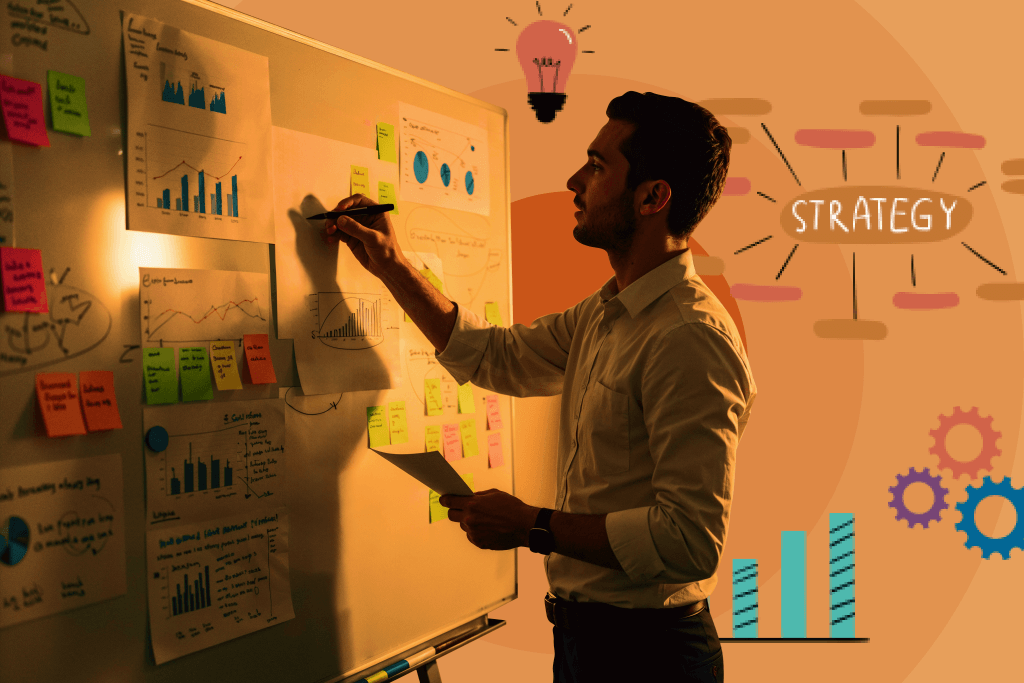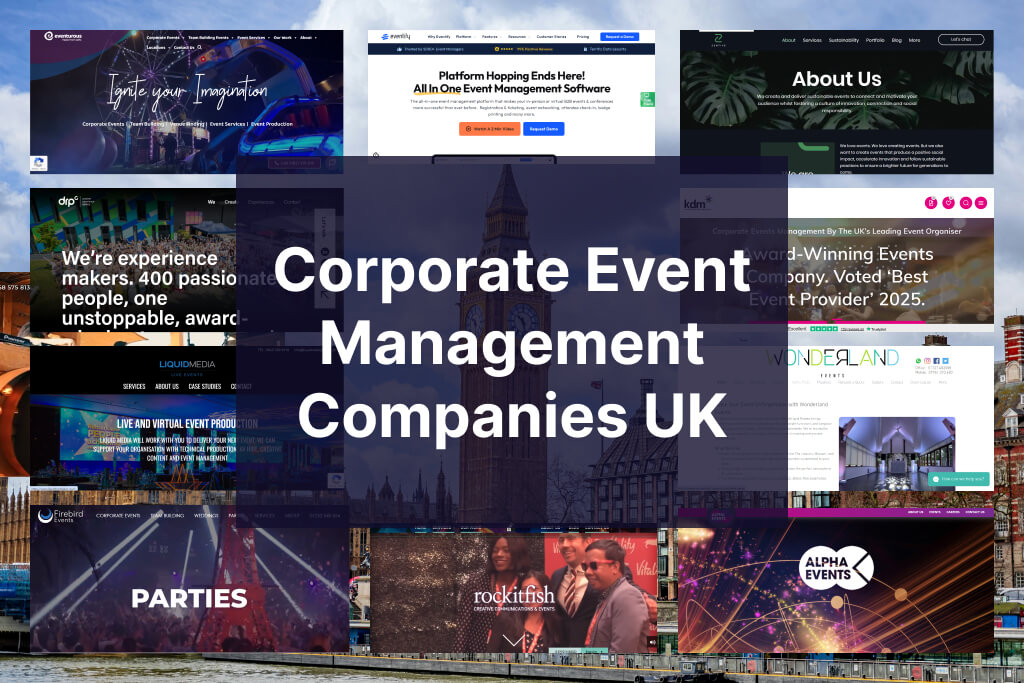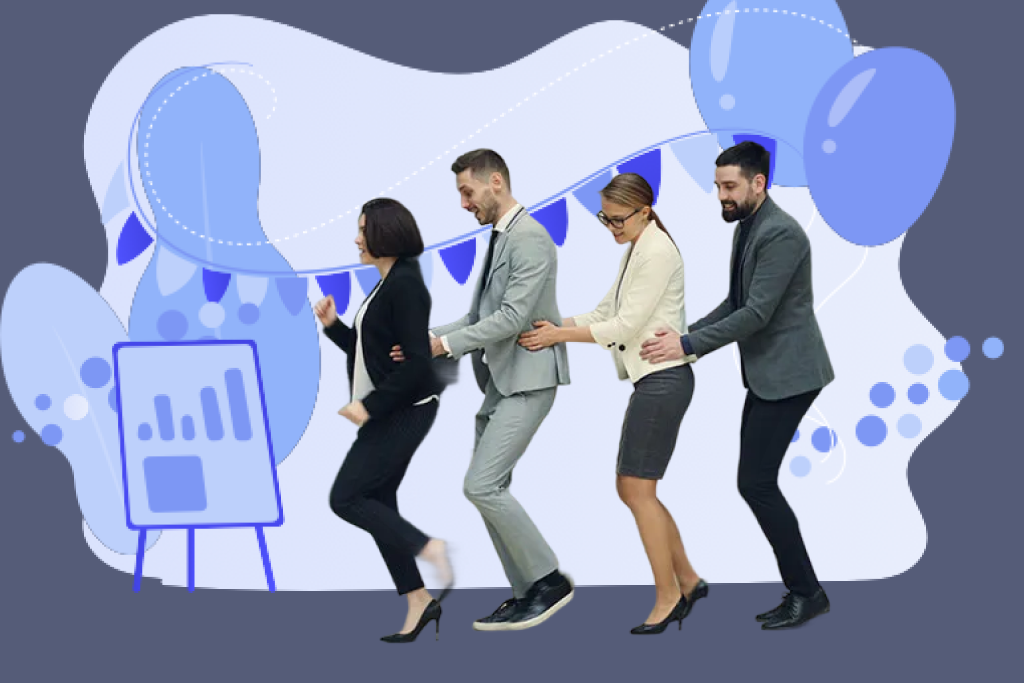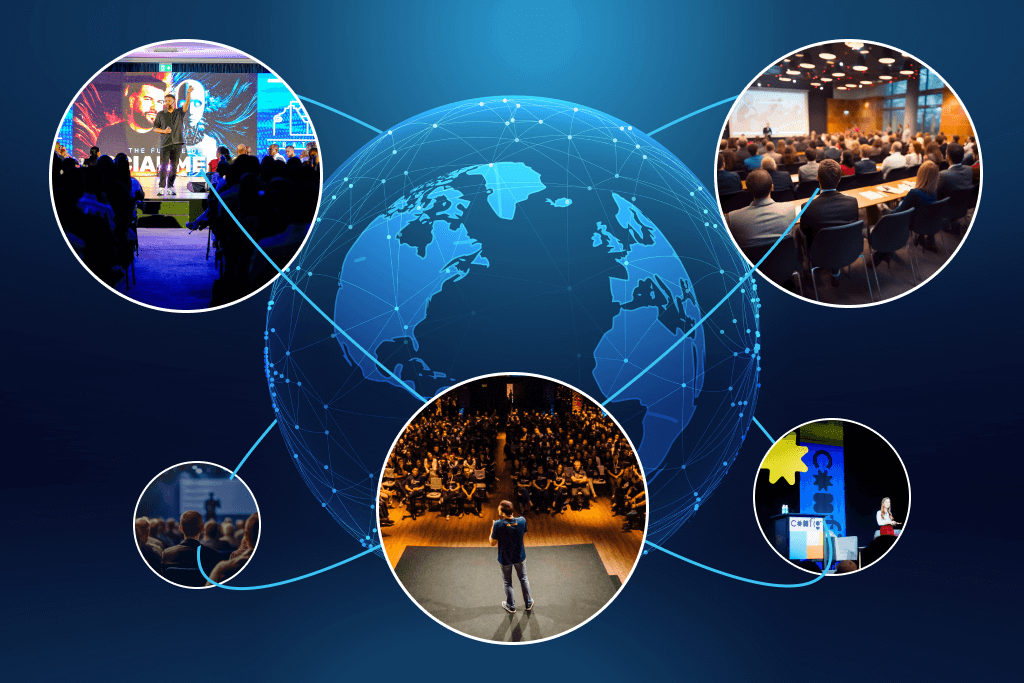When you attend or plan an event, what do you think indicates its success? While most people think it’s the cost or turnover of the event, according to recent research, other than cost, event attendance is actually the most commonly used KPI for measuring the success of events.
Businesses or event planners tend to invest in marketing techniques such as paid ads, social media marketing, email marketing, and more, thinking that they’re the best ways to gather a large audience. However, these techniques have gotten costlier over the years, with rising CPMs and lower ROIs. There’s a widening gap between the amount a business invests and the total audience that shows up, making customer acquisition costlier.
Fortunately, one channel that continues to outperform in the event marketing realm is referral marketing. It is proving to be one of the greatest and most effective ways to gather event attendees. As per Impact, 86% of consumers rely on recommendations and reviews to make their purchase decisions.
So, how can you turn referrals into a reliable and trackable channel to gather people at your upcoming events? How do you make sure that the referrers - be it past attendees, business advocates, or influencers that have a big following amplify your message the way you intend to? Read on as we provide you with the only blueprint you need to build an event-specific referral marketing strategy in this article.
Understanding Event Referral Marketing Fundamentals
.jpg)
Usually, we have all heard about referral marketing for product-based companies. From reviews to recommendations, referrals make product marketing a success. But what changes when it comes to events? To give you a brief idea, events thrive on social proof, making the opinions and experiences of past attendees or referral marketing experts highly crucial.
Let’s dive into more detail on event referral marketing.
What makes event referral marketing unique?
Attending events isn’t just a time-consuming task or a one-time purchase; physical events need quite the commitment, involving travel, expenses, taking time away from work, and so much more. This makes it even harder to get people to attend an event. However, if there was someone whose opinion you trust recommending you to go to a certain event, you’re more likely to attend and commit.
Compared to any other industry, referral marketing is much more important for events. Promotional ads or organic social media marketing can not make the same kind of impact on the audience.
The Trust Factor: Why Personal Recommendations Drive Event Attendance
Referrals are built on trust and credibility. You’re more likely to attend an event, be it physical or online, if you were asked to do so by an industry leader or a peer of yours. If you saw an ad asking you to attend, no matter how appealing it sounds, you would likely scroll past it. Within just two years, 86 % of companies that implemented a structured referral program reported an increase in revenue.
Referrals don’t just build credibility, they also build social proof. The proof that you need to get more attendees/sponsors/exhibitors, spread the word, and make a good return on your investment. It reassures people, ignites demand, and also increases brand recall.
The Three-Tier Referral Approach: Attendees, Exhibitors, and Sponsors
You may think that referrals only apply to attendees. Meanwhile, referral marketing is a more extensive channel that involves a range of stakeholders, including attendees, exhibitors, and sponsors. The three-tier approach increases engagement and the impact and profitability of referrals by offering opportunities to reward participants or stakeholders.
Here’s an example of how you can approach this:
1. Tier 1 - Attendees: Event organizers can encourage as well as reward attendees for referring their event to their colleagues, friends, or basically anyone whom they find relevant. The referral reward could be discounts, VIP access, free merchandise, or even monetary rewards.
2. Tier 2 - Exhibitors - If exhibitors recommend others to exhibit with them or at upcoming events, you can offer them incentives. In exchange, you can mention them in event marketing materials, offer them booth fee discounts, or even give them leads that might help their business.
3. Tier 3 - Sponsors - No event is fully profitable without its sponsors, and with a good network of sponsors, you can certainly make your desired ROI from the event. Event organizers can provide them with the opportunity of discounted future sponsorship packages, co-branding, or high event visibility.
Pro Tip: You can reward comprehensive advocates who refer across stakeholder groups. For example, if an attendee refers both an exhibitor and a sponsor, automatically grant them an “All-Access VIP Tour.” Bundled incentives encourage referrers to think beyond their own ticket, driving multi-stakeholder growth in one program and elevating your ROI per advocate.
You could also hold monthly mini-challenges in which sponsors, exhibitors, and attendees collaborate to meet group referral goals. Each member of a trio gets access to a private Q&A session with a keynote speaker after they have collectively generated, say, ten referrals. This cross-network strategy strengthens ties within the community and promotes exponential network effects.
Building Your Event Referral Marketing Foundation

Referral marketing can only be done successfully if it is planned holistically with the idea of benefiting not one, but every party involved. It’s not about using the right tools or software; it is about understanding what your stakeholders want to be more involved with the event, planning the strategy or foundation in a way that brings out the highest ROI for your event, and having a customized approach that applies to your event specifically.
Let’s first look at how you can identify your referral ambassadors.
Identifying Your Ideal Event Referral Ambassadors
Referral ambassadors for events can be from any of the categories (attendees, sponsors, or exhibitors). Here are a few examples of the ideal ambassadors in these categories:
1. Attendees:
- They can be respected people in the community or any industry leader who has a huge following (both online and offline)
- They can be people who have previously attended and were either incentivised to bring in more attendees or were impacted by the event, so that they organically spread the word
- People who are attending for the first time and would like to share this experience with colleagues or friends, or any other relevant parties
2. Exhibitors:
- They can be companies that are well-established within their specific industries and have a good rapport to attract peers and partner exhibitors
- They can be past exhibitors who not only had a good experience with the overall event, but they also made a good return on their investment
- Additionally, any company that is new and sees the credibility in your event automatically adds credibility as a referrer
3. Sponsors:
Sponsors are one of the most key advocates of your event and can be any of the following:
- Long-term partners who have established networks within their industry
- Brands that have an influence in the industry and are willing to invite complementary sponsors and partner with them to enhance their presence
- Top-level sponsors can be ideal as they carry significant weight within their networks and are highly respected to influence a large group of companies at once.
The task of finding the ideal ambassadors doesn’t end here. Once the best attendees, exhibitors, and sponsors have been identified, you should segment them clearly to lay out a proper foundation. It will allow you to personalize all forms of interaction in the future, including communications, outreach, and rewards.
Timeline-Based Referral Campaign Planning

The timeline of your entire referral campaign is what could make it a success. From laying the foundation to post-event engagement, here’s an example of a suggested referral campaign timeline:
Email Campaign Tools for Event Referral Marketing
One of the best and least expensive ways to communicate before, during, and after an event is via email. Every stage of an event can benefit from email marketing if a successful plan is in place to attract attendees, exhibitors, and sponsors.
In the sections below, we’re giving you a detailed guide on how to effectively use email marketing and how to structure, automate, and integrate email campaigns in your event at every step, from pre-event campaigns to post-event engagement.
Pre-Event Email Referral Campaigns
Let’s look at a 6-Month Timeline
During-Event Real-Time Referral Activation
1. QR Code Scavenger Hunt -
You can place referral QR codes at strategic venue points (entrance, food stalls, lounges). Scanning counts as an instant referral share and enters participants into hourly giveaways. This turns the venue itself into a sharing playground.
2. Flash Referral Hours
Announce surprise one-hour windows where each referral earns triple points or an instant prize. Push notifications through your website or event app to create urgency so that attendees race to beat the clock, spreading links en masse.
You can automate these emails with the help of an email marketing platform such as Eventify’s event-triggered journeys or in-app push notifications, all fed by live check-in data from your registration system.
Post-Event Follow-Up and Future Event Referrals
The 30-day window after the event is referral gold: satisfaction is high, and memories are fresh, making it a key time for follow-ups and gathering the next event’s referrals.
Integration with Event Registration and CRM Platforms
1. Eventify - Any Email Service Provider: Eventify, along with any other email platform, can generate unique referral URLs, track conversions in real time, and issue digital rewards automatically, eliminating the need to manually do so.
2. Eventbrite - Mailchimp: With this integration, you can auto-tag new registrants and trigger referral journeys as soon as a ticket has been purchased.
3. Cvent - Salesforce: With Cvent & Salesforce, you can have full-funnel attribution of your referrals. You can write down referral sources and tier statuses directly to the contact record with these platforms.
Social Boost Strategies for Event Promotion
Platform-Specific Event Promotion Strategies
Creating Shareable Event Content and Experiences
The primary goal should be to build a shareable content bank that is both appealing to the audience and potential referrers. For example, you can have speaker spotlights where you place QR codes that unlock special discounts, behind-the-scenes videos with time lapses of booth builds pre-event and during the event, and you can have reels with exhibitors and attendees.
Any form of content that can be a viral moment for your event must be captured and added to the content bank to bring in referrals. Additionally, you can ask the attendees or exhibitors to create content, providing them a chance to share it on your event page. You can promote the idea of making reels with friends, co-partners, or colleagues to get more referrals.
Viraliser Tools and Event Viral Mechanics
Event Viral Mechanics That Drive Exponential Registration Growth
Gamification and Competition Elements for Event Promotion
Along with viral mechanics for event referrals, event organizers can gamify the competition using methods such as individual progress bars, team challenges to boost sales, and even games like spin wheels, where referrers can earn rewards like merchandise or backstage tours. Here are a few more ideas -
1. Daily Referral Streaks - Track consecutive days where a user makes at least one referral. Each day adds to their “Streak Level” - rewards escalate (digital badges, discount codes, VIP access). Unlike limited pushes, streaks encourage consistent sharing.
2. Referral Spin-to-Win Wheel - After every referral, give referrers the opportunity to spin a digital prize wheel that could include drink coupons, backstage passes, or bonus points. Suspense and visible animations increase excitement, promoting more spins and referrals.
Social Sharing Optimization Tools for Events
Building FOMO and Urgency in Event Marketing
Any event can be a success if event organizers utilize FOMO well. FOMO, or fear of missing out, creates urgency and makes people want to be a part of the experience more, as if they will miss out on something extremely life-changing. Combined with a referral marketing program, here are some examples of how you can build this up:
1. Tiered Early-Bird Deadlines
Deadlines are a great way to gather people for your event quickly. You can have discounts in a tiered format where the earliest ticket buyers get a 40% discount, the next 200 people get 25% off, and so on. You can roll out posts and emails where you can show the number of seats remaining with a 40% discount to create urgency.
2. ‘Secret Session’ Reveals
You can announce a mystery keynote, but the speaker’s name can only be unlocked if an attendee refers a friend. Something like “share to reveal” can be introduced via communication channels, and some of them can also be provided with special meet-and-greet passes.
3. Limited-Edition Rewards
Offer just 50 backstage passes or 25 exhibitor-tour slots for top referrers of your event. You can publish a leaderboard so that the event’s referral ambassadors can watch their rank slide down if they don’t keep sharing, making them feel like they’re missing out.
4. Flash Contests & Micro-Deadlines
Anything with a small deadline usually attracts more attention. During the week of your event, you can push a 2-hour challenge via SMS for a select group of referrers and ask them to refer one walk-up by 5 PM and get free meet-and-greet passes or additional discounts.
5. Ephemeral Content
You can make use of stories that disappear in 24 hours, or you can have a “close friends” group on Instagram where you only allow select people. First, you can post for the entire following that anyone who wants to get added to this group needs to get 1+ referrals for the event to get exclusive news or rewards in the closed group. Then, you can add those who apply.
Unique Ways of Measuring Event Referral Success and ROI
Once you’ve put in all your efforts and embraced referral marketing, you need to track how it actually performed and whether it was worth the investment. Let’s look at some unique KPIs and metrics that matter other than ROIs, referral conversion rate, and number of attendees:
1. Engagement-Adjusted Conversion Rate - Go beyond raw sign-ups by calculating referrals weighted by onsite engagement—booth visits, session check-ins, or app interactions. A conversion from a highly engaged referrer carries more “points” than a passive one, giving you a nuanced view of referral quality, not just quantity.
2. Referral Velocity Score - Track the average time between when a referral link is sent and when it converts. A lower velocity indicates hotter prospects, and you can automate “nudge” emails or SMS reminders at key velocity thresholds (e.g., 48 hours post-share) to keep momentum high.
3. Referral Conversion Rate: Attendees, sponsors, or exhibitors can bring in a huge number of people. But how many of them actually converted? A conversion rate of 25-40% is considered to be a good indicator of event success.
Conclusion
If you’re still investing your time and resources in the usual marketing channels for your events, you need to step up. Referral marketing is no longer an additional task or something you add on along with other channels. When done right, it can be truly beneficial for your event company and bring out the ROI that your events deserve.






.png)





